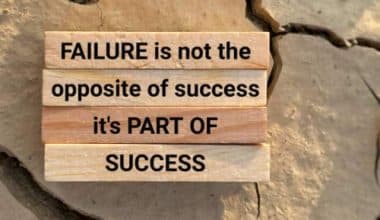You see, almost anyone or everyone can write an email and still pass across a message. But it takes more to write a memo. More than passing information, a memo should be very clear and concise, otherwise, you’ll just bore the readers and they end up missing the whole point. Here, I’ll provide you with actionable steps on how to write a concise memo, with useful templates. But, just in case you’re mixing up a memo with an email, let’s first define a memo, otherwise known as a memorandum.
Key Takeaways
A memo is a brief message that efficiently conveys important information in an organization. It is structured in a way that efficiently and concisely presents a wealth of information.
To write a good memo:
- Begin with a header
- Craft a clear, objective statement
- Provide a comprehensive body paragraph
- Provide background information
- Include specific tasks and guidelines
- Include a brief conclusion
- Include your contact information
- Include attachments where necessary
What Is A Memorandum?
A memo is a brief message that efficiently conveys important information. You have the flexibility to choose the most suitable medium for communication in your workplace, such as an email, Slack announcement, or a physical notice on a bulletin board.
The memo is structured in a way that efficiently and concisely presents a wealth of information. From announcing changes in company policy to providing vital project updates, this communication ensures that readers’ time is not wasted. Writing an email may be a task that anyone can accomplish, but mastering the art of memo writing requires time and practice.
Read Also: EMAIL SYSTEMS FOR BUSINESS: 17+ Best Picks in 2023 (Detailed Review)
When Do You Need To Write A Memo?
Gallup’s 2022 State of the Global Workplace Report reveals that a significant 41% of employees express a desire to modify their company’s engagement or culture. Communication is a prime example of this. Strong culture is uplifted by meetings, emails, and effective memos, which support interactions.
Understanding the appropriate timing for writing a memo enables you to select the most suitable form of communication for the given circumstances and prevent the formation of isolated pockets of information. Here are some scenarios where you’ll need to write a memo:
#1. Notifying staff about company policies or changes
A memo is a great tool for keeping your staff informed about any updates or modifications to your organization’s policies, procedures, or strategies. Uniform understanding is promoted and encourages immediate questioning, saving time and preventing the spread of misinformation.
#2. Calling attention to an issue
A memo is an effective way to inform everyone about a significant issue that is impacting your organization’s functioning. A well-crafted memo plays a crucial role in fostering engagement and enhancing the employee experience. By keeping individuals informed about significant matters and highlighting the significance of their contributions, the memo ensures that everyone remains connected and valued.
Read Also: EMPLOYEE ENGAGEMENT SURVEY: Best Providers, Questions & Answers
#3. Providing updates on a project
Memos effectively inform stakeholders about the progress of a project, any adjustments to the timeline, or any resource requirements. Keeping everyone informed about the project’s deadlines and ongoing developments is crucial for avoiding obstacles and ensuring smooth project execution.
#4. Making a request
A memo is an excellent way to clearly and directly communicate formal requests, such as those for resources, approvals, or feedback. A memo serves as a persuasive tool for gaining support or approval by clearly stating the reasons and potential benefits of your request. Additionally, it can anticipate and address any potential questions that may arise.
#5. Recognizing employee achievement
Memos can be used to acknowledge and highlight exceptional employee performance and achievements, such as promotions. Expressing recognition for hard work while emphasizing company values has a multipurpose effect. It boosts morale and fosters a positive work environment.
Why Clear and Concise Memos Matter
Let’s say you are handed a memo that is long and filled with confusing language and unclear instructions. Will you read it thoroughly and take action? Most likely not. Clear and concise memos are crucial for ensuring that your message is understood and acted upon effectively.
How To Write A Clear and Concise Memo
Formatting plays a crucial role in writing a concise and thorough memo. Every piece of information in the memo has a role to play in making it easily digestible and actionable, just like in a professional email. This includes everything from the subject line to the salutation.
Follow these steps to make sure your messages are clear and get the desired results:
#1. Begin with a header.
Begin by including a detailed header to establish the context. Include the date and general subject in the header, as well as the recipients and senders of the memo. Provide contextual elements to help readers grasp the basic premise and take the necessary actions.
#2. Craft a clear, objective statement
Begin your memo by clearly stating its purpose concisely and directly. Use an objective statement or problem statement to convey the main point. The memo’s objective should be easily understood by the recipients, allowing them to quickly grasp its intent.
Consider a cover letter. Typically, the opening line of a memo states the purpose directly, ensuring that readers are immediately aware of the document’s nature and objective.
Read Also: Incorporating Mission Statements into Branding: A Comprehensive Guide for Businesses
#3. Provide a comprehensive body paragraph
Ensure that the body of the memo is thorough, even though it has limited space. This will allow you to effectively develop your main points. Begin with the most important details right away, and then gradually transition to less crucial but still relevant information.
Improve readability by organizing the body with bullet points or numbered lists. Make sure your writing is clear and avoid unnecessary jargon that could confuse your readers. Ensure that your memo is concise and easily understandable.
#4. Provide background information
Include a brief background section if your memo references previous events, circumstances, or memos. This provides context, orients your readers, and ties your current communication to past events or actions,offering a comprehensive understanding of the situation at hand.
#5. Include specific tasks and deadlines.
Include a clear call to action in memos, directing readers on what steps to take next. This could involve acknowledging receipt or locating a meeting room immediately. It’s important to clearly define the steps to be taken, identifying the responsible parties, and specifying the deadlines for these tasks
Encouraging accountability and fostering a shared understanding of expectations creates a more organized and efficient work environment.
Read Also: THE IDEAL WORK ENVIRONMENT: Things That Make up an Ideal Work Environment
#6. Include a brief conclusion
Consider including a brief conclusion to summarize the key points if your memo addresses a complex matter or is notably lengthy. Reiterating the main points through a brief summary helps reinforce the essential elements of your message, making it easier for others to understand.
#7. Include your contact information.
Communication can often be unclear, no matter how much effort you put into it. You should find a way to address any questions people may have about what to do next. That’s why you should include your contact information at the end of your memo. It could be your mobile contact, desk location, or Slack handle. Your colleagues can easily reach out to you if they have any questions or need further clarification on any points.
#8. Include attachments where necessary
Attach or provide accessible links for any referenced documents, graphs, or materials. Your readers will have all the necessary resources to fully understand and act upon the memo. By linking out, you can avoid overloading the memo with excessive information.
Memo Examples
Here are some memo examples for different situations to help you better understand how to write a well-crafted and tailored memo:
#1. Policy Update Memo
This example effectively outlines changes in company policy and provides a clear explanation of the reasons behind the change. The text fosters curiosity by inviting questions and providing clear directions on where to find additional information, ensuring transparency and offering support:
To: [person or department name]
From: [person or department name]
Date: [insert date]
Subject: [subject] Policy Change
Hi all,
I’m writing to inform you of an important update regarding [policy]. Effective [date], we will be implementing changes to [specific details of the policy changes].
The purpose of this change is to [explain the rationale behind the change and its benefits]. We believe that these adjustments will contribute to [goal].
Please take the time to review the attached document outlining the updated policy in detail. Should you have any questions or concerns, feel free to reach out to [contact person or department].
Thank you for your attention to this matter.
Best regards,
[name]
[position]
#2. Project update memo
A project update memo keps everyone informed about a project’s progress, any changes to the original plan, or any challenges along the way. Continuously communicating like this helps prevent issues and ensures that everyone is striving towards the same objectives:
To: [person or department name]
From: [person or department name]
Date: [insert date]
Subject: [project name] Update
Dear team,
Here’s an update on the progress of [project name]. Here are the key developments since our last update:
[a summary of tasks and milestones]
[any challenges or issues and how they were resolved]
[any adjustments to the project timeline or scope, if applicable]
Overall, we’re making steady progress and remain on track to meet our goals. Please stay vigilant and continue to give your best effort to ensure the successful completion of this project.
If you have any questions or need further clarification, please don’t hesitate to reach out to me. Let’s keep up the excellent work!
Best regards,
[name]
[position]
#3. Issue alert memo
This type of memo raises awareness. It focuses on a particular issue that impacts the company, a department, or a specific project. In addition to highlighting the problem, it can also suggest potential steps to address it, encouraging proactive problem-solving within the organization.
To: [person or department name]
From: [person or department name]
Date: [insert date]
Subject: [subject] Issue
Hi team,
I’m writing to bring your attention to an issue with [subject]. It has come to our attention that [describe the issue and its impact on the company or employees].
We understand the potential challenges that this may pose and are actively working on resolving the situation. In the meantime, we encourage everyone to [provide any necessary instructions or precautions].
Rest assured that we’re taking this matter seriously, and we will keep you updated on any progress or further instructions. If you have any insights or suggestions related to this issue, please share them with [contact person or department].
Thank you for your understanding and cooperation.
Sincerely,
[name]
[position]
#4. Request memo
The request memo serves as a formal document that expresses the need for resources, feedback, or approval. When you clearly outline the reasons behind the request, you effectively communicate the need for these items and the impact they could have on the team.
To: [person or department name]
From: [person or department name]
Date: [insert date]
Subject: [specific request]
Hi [person or department name],
I hope this message finds you well. I’m writing to formally request [specific request]. This is because [provide a concise explanation of the request, including its importance and potential benefits for the company].
I’ve attached a detailed proposal outlining the specifics of the request, including [details, supporting data, and relevant information].
Should you have any questions or require further information, please don’t hesitate to reach out to me. I appreciate your attention.
Best regards,
[name]
[position]
#5. Employee recognition memo
Sending a memo is a fast and effective method to acknowledge and honor an employee’s accomplishments or valuable contributions to the company. Expressing appreciation for hard work not only boosts morale but also fosters a healthy environment for everyone.
To: [person or department name]
From: [person or department name]
Date: [insert date]
Subject: Quick kudos
Hi all,
Let’s all take a moment to appreciate [employee name] from [department/team]’s exceptional performance and dedication. They have consistently demonstrated [specific achievements, qualities, or contributions].
Their hard work and commitment to excellence have been truly remarkable and deserving of recognition. [employee name]’s efforts reflect positively on the entire team and contribute to our overall success as a company.
Please join me in congratulating [employee name] for their outstanding achievement. We appreciate their continued dedication and professionalism. Let’s celebrate this milestone and continue to inspire and support one another in our respective roles.
Warmest congratulations once again!
Best regards,
[name]
[position]
Read Also: EMPLOYEE APPRECIATION DAY: Best Ideas For Celebrating Your Employees
Format for a Business Memo
The format of the business memo is designed to effectively communicate your message in a clear and concise manner. A well-crafted memo should deliver the essential information in a manner that allows a large number of employees to easily understand and absorb it.
Ensure the subject line accurately notifies recipients that this memo pertains specifically to them. Starting with an executive summary helps recipients grasp the overall message before delving into the specifics. Providing context through background information, addressing potential questions with an overview and timeline.
Title:
Make sure to label your content as “Memorandum” in the header to provide clear and precise information to your readers. Make sure to include the “TO”, “FROM”, “DATE”, and “SUBJECT” as mentioned earlier. Addressing the relevant content includes considering who you are speaking to and why it is important.
The first paragraph:
Begin the first paragraph by stating the purpose of your memo in a clear and concise manner. Starting your sentence with phrases like “I’m reaching out to inform you …” or “I’m reaching out to request …” can add a personal touch to your message. A well-crafted memo is concise, transparent, and gets straight to the point. Start by presenting your most important information right away, and then use the following paragraphs to provide more in-depth explanations.
The second paragraph:
Make sure to include context or supporting evidence in the second paragraph. For example, imagine you’re writing a memo to inform the company about an internal re-organization. If this is the case, paragraph two could be revised to state, “Our company’s growth has led us to the decision of separating our video production team from our content team. This strategic move allows both teams to concentrate on their specific objectives.”
The third paragraph:
Make sure to include a specific request for each employee in the third paragraph. For example, if you’re planning a team outing, you can say something like, “Please RSVP with any dietary restrictions” or “Feel free to email me if you have any questions.”
Contrarily, when informing staff about the upcoming construction of the building, it is important to express appreciation for their cooperation during this time. You should provide guidance on how you hope they will handle the news and whether any specific action is expected in response to the memo.
Read Also: 5 Ways to Boost Staff Morale
How Do You Write A School Memo?
To write a school memo, begin with a clear header including date, recipients, and sender. Craft a concise objective statement, followed by a comprehensive body paragraph, background information (if needed), specific tasks and deadlines, brief conclusion, and contact information.
How Long Is A Memo?
The length of a memo typically ranges from one to two pages, or around 200 to 400 words, depending on the complexity and urgency of the message.
Do Memos Have Subheadings?
Memos typically do not have subheadings. They are concise, single-page documents meant for quick communication, so clear formatting and direct language are prioritized over complex structures.
Does a Memo Have a Signature?
Memos typically include the sender’s name, position, and contact information at the end, serving as a form of signature.
In Conclusion,
A memo and an email differ primarily in the size of the audience, rather than the level of complexity. Ensure your memo effectively communicates your message and is relevant to the receiving group of employees, whether it is simple or intricate. Make sure the message is clear and concise, regardless of the memo format you choose.
- WHAT SHOULD BE IN A RESUME: Complete Guide[15+ Free Tips] & Proven Steps in 2023
- How to Fill Out a Money Order Correctly: Step by Step Guide
- How do Money Orders Work? (+How to Buy with Debit Cards)
- How To Write A Check: Best Ways To Write A Check (Updated)






